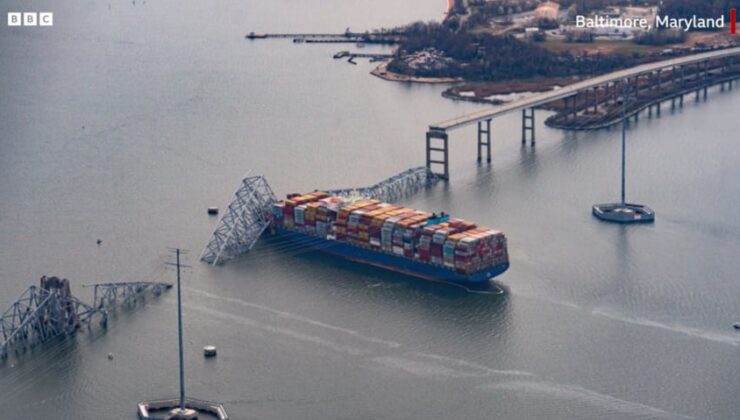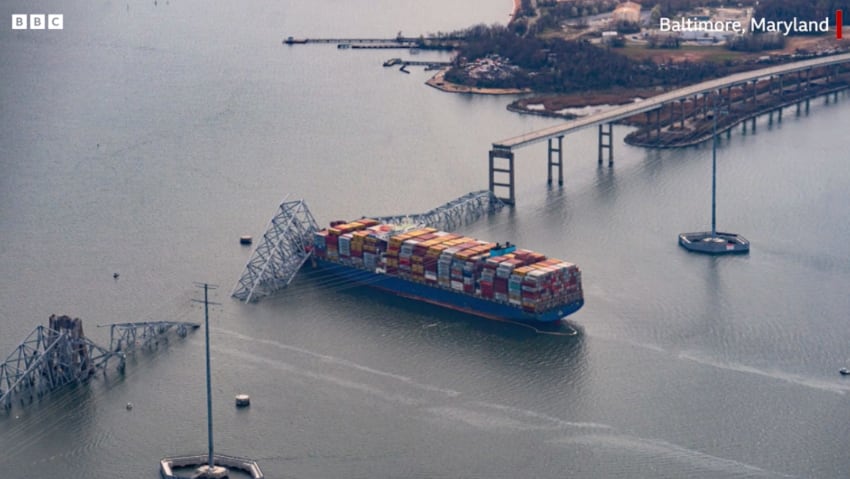

The marine re/insurance sector is now a year removed from the Baltimore Bridge collapse, a pivotal event that has significantly influenced industry dynamics. Initially, loss estimates ranged between $2-3 billion, but by the end of 2024, consensus had settled at around $1.5 billion, shaping the expectations for the January 1, 2025 renewals.
The timing of the collapse, just before the 1.4.2024 renewals, meant its impact wasn’t immediately reflected in pricing, owing to its proximity to renewal dates and initial loss uncertainties, according to analysts at Howden.
Despite the magnitude of the disaster, the overall market impact on pricing was surprisingly moderate. During the 1.1.2025 renewals, the market experienced a moderate softening in risk-adjusted rates, ranging from flat to -10%. Without the Baltimore event, more significant declines might have been observed.
Richard Miller, Managing Director, Specialty Reinsurance at Howden Re, noted: “While the incident served as a stabilizing factor in a softening market, it did not trigger the widespread hardening some anticipated. New entrants, competitive pressures, and strong prior-year profitability enabled the market to absorb the loss without a major correction.”
While the broader market gradually absorbed the loss, the secondary market, where Howden Re plays a crucial role, faced a more immediate reaction. The International Group of P&I Clubs placement saw notable rate increases across all layers. Similarly, facultative placements, which often mirror original pricing, experienced significant rate hikes, irrespective of their initial structure.

Miller observed: “This is where the most immediate impact was felt. Despite rate increases, these deals continued, underscoring the resilience and adaptability of the secondary market in adjusting to emerging risk realities.”
The limited pricing response to the Baltimore Bridge collapse raises the question: what scale of event would trigger a hard market? Miller pondered, “A loss of this magnitude would have previously hardened the market. However, increased competition, with more players vying for a limited book of business, has diluted the impact of such events.”
Analysts debate whether multiple significant losses or a single larger-scale event might force market hardening. Miller added, “With more capacity than ever seeking expansion, the industry’s ability to absorb losses while maintaining stable rates is crucial in mitigating widespread corrections.”
Historically, large-scale pollution or catastrophic casualties have driven market hardening. While the Baltimore event represents a major insured loss, its lack of environmental disaster or large-scale casualty limited its broader market impact.
The Baltimore Bridge collapse is regarded as a “long-tail loss,” with settlement processes expected to span years, akin to the ongoing 2019 Golden Ray claim. The event’s complexity, involving legal fees, multiple claimants, and regulatory aspects, contributes to a protracted timeline.
Howden notes that this differs from past events like the 2012 Costa Concordia, where logistical and legal delays escalated costs. The US Army Corps of Engineers’ swift removal of the bridge wreck mitigated prolonged complications.
“Claims from surrounding businesses are still a factor, but the initially estimated $360 million revenue loss during the rebuild was substantially offset by increased tolls from neighboring bridges, now estimated at $50m to $100 million,” Miller explains.
Additionally, the State of Maryland’s potential responsibility for some rebuild costs, due to previously unimplemented structural updates, could affect liability discussions.
Howden concludes: “The Baltimore Bridge collapse acted as a speed bump on softening rates, without reversing the broader trend. It underscores the complexities of marine liability claims and the strategic role of the secondary market in a landscape shaped by emerging risks.”
ENGLİSH
4 gün önceSİGORTA
4 gün önceSİGORTA
5 gün önceSİGORTA
8 gün önceSİGORTA
9 gün önceSİGORTA
10 gün önceDÜNYA
19 gün önce 1
Elon Musk’s Father: “Admiring Putin is Only Natural”
11553 kez okundu
1
Elon Musk’s Father: “Admiring Putin is Only Natural”
11553 kez okundu
 2
xAI’s Grok Chatbot Introduces Memory Feature to Rival ChatGPT and Google Gemini
10561 kez okundu
2
xAI’s Grok Chatbot Introduces Memory Feature to Rival ChatGPT and Google Gemini
10561 kez okundu
 3
Minnesota’s Proposed Lifeline Auto Insurance Program
9469 kez okundu
3
Minnesota’s Proposed Lifeline Auto Insurance Program
9469 kez okundu
 4
Introducing Vivo Y300 Pro+: A Blend of Power and Affordability
7407 kez okundu
4
Introducing Vivo Y300 Pro+: A Blend of Power and Affordability
7407 kez okundu
 5
What’s the best car insurance for seniors?
6063 kez okundu
5
What’s the best car insurance for seniors?
6063 kez okundu
Veri politikasındaki amaçlarla sınırlı ve mevzuata uygun şekilde çerez konumlandırmaktayız. Detaylar için veri politikamızı inceleyebilirsiniz.